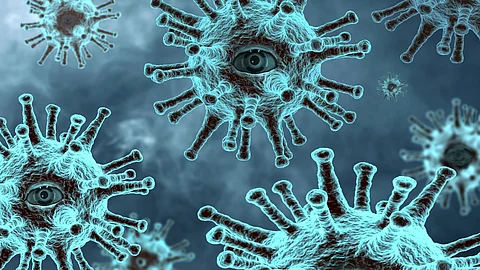

A recent study published in the journal eLife found that some of the most dangerous bacteria in the world displayed a strange thirst for human blood. Referred to as "bacterial vampirism" by scientists, this unusual occurrence reveals the mechanisms behind bloodstream infections and possible techniques for treatment.
Under the leadership of Professor Arden Baylink and Ph.D. candidate Siena Glenn, the group investigated the complex mechanisms behind bloodstream infections brought on by specific bacterial strains. Their discoveries provide important scientific concepts about the behavior of pathogens that are highly dangerous to human health, such as Salmonella enterica, Escherichia coli, and Citrobacter koseri.
According to the study, these bacteria exhibit an unexpected ability to find out and feed on serum and are attracted to human blood. Serum is the liquid component of blood, which acts as a rich source of nutrients, such as carbohydrates, amino acids, and important metals like iron and zinc, that are necessary for bacterial life.
The bacteria's preference for serine, an amino acid that is widely present in human blood and is also present in protein drinks, is very significant. By injecting tiny volumes of human serum, the researchers carefully experimented with intestinal bleeding using a powerful microscope system created by Baylink. The bacteria showed remarkably quick chemotactic reactions, focusing in on the source of the serum in less than a minute.
Further research revealed the complex molecular mechanisms behind this behavior. For example, Salmonella can recognize and move toward serum because it has a specific protein receptor called Tsr. The precise interactions between this receptor and serine were detected by the researchers using protein crystallography, providing insight into how bacteria detect and absorb blood components.
This finding has significantly greater implications than just increased academic interest. Understanding how these bacteria find and utilize blood supplies may help develop new treatment methods. Researchers want to lower the risk of bloodstream infections by developing drugs that specifically target bacteria's capacity to identify blood, specifically among susceptible groups like those suffering from inflammatory bowel illnesses (IBD).
According to Baylink, "bacteria infecting the bloodstream can be lethal." In fact, bloodstream infections are more common in IBD patients, who frequently have intestinal bleeding. Researchers want to protect these individuals and their health by understanding the mechanisms underlying bacterial vampirism.
This discovery highlights the urgent requirement for more studies on antibiotic-resistant bacteria, including the ones the WSU team is looking at. Innovative methods of infection prevention and treatment are more important than ever since multidrug-resistant bacteria are becoming an increasing threat to public health worldwide.
Therefore, the identification of bacterial vampirism provides a new understanding of the mechanisms behind bloodstream infections and reveals a disturbing aspect of microbial behavior. Based on this understanding, scientists can create targeted therapies that have the potential to save lots of lives in the fight against fatal infections.
(Input from various media sources)
(Rehash/ Susmita Bhandary/MSM)
